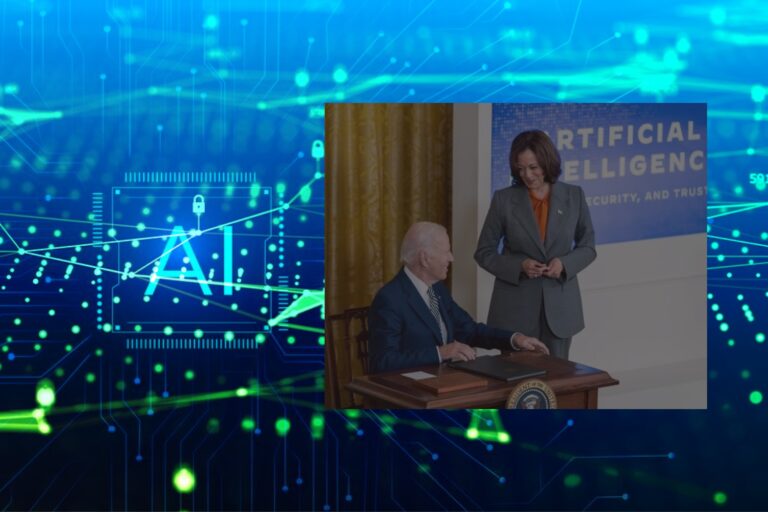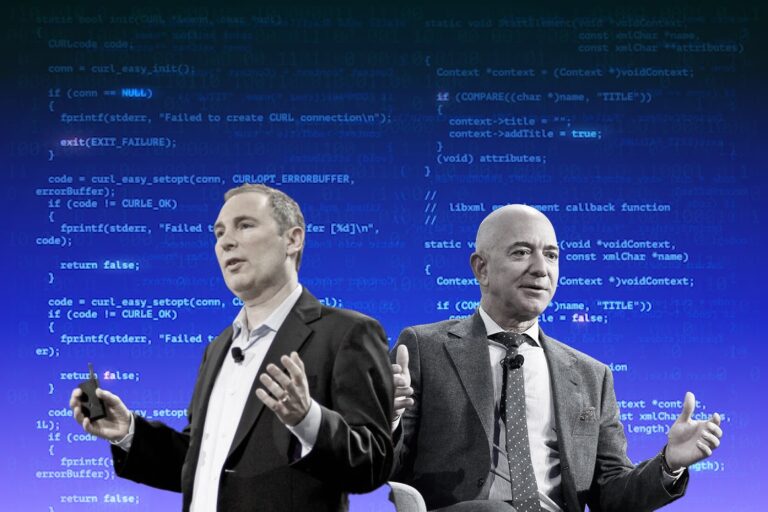Open Source Software Solutions: Can “Free” Be “Profitable”?
Far gone are the days when there was an ample dose of skepticism from investors about the viability of open source as a business model. Around six years ago, it was a common thesis that Red Hat was a snowflake and that no other open-source company would be significant in the software universe – and now, Red Hat has been acquired by IBM for staggeringly $34 billion (over 3x times its market cap from 2014), Microsoft paid $7.5 billion to acquire the code hosting and collaboration platform GitHub, MuleSoft was acquired after going public for $6.5 billion, MongoDB is now worth north of $4 billion, Elastic’s IPO now values the company at $6 billion, and even Walmart has released its own open source software solutions.
Actually, it’s completely fair to state that this is the world of open-source software, where code is written and distributed freely. In fact, the majority of the software that powers the world’s largest companies, protects human personal data, or even encrypts national security information is open to the public. Every single person can easily download the source code behind Facebook’s user interface, Google’s Android operating system, or even Goldman Sachs’ data modeling program, and leverage it as a building block for a totally new project. In addition to free distribution, a plethora of software has been developed collaboratively – being created and maintained by an army of thousands, from unpaid volunteers to employees at competing tech companies.
So, why did this movement that once represented the bleeding edge of software become the hot place to be? How did a business model that essentially revolves around giving away information and products take over the world? Let’s go explore!
A Brief Look Over the Rise of Open Source Software
Before diving into the origin as well as current immense popularity of open source software solutions and open source community, it’s essential to first take a look over the general context.
First of all, it’s worth noting that whereas open-source tools have been on a meteoric rise, this model “hasn’t always been the norm”! At the dawn of the Internet era through the late 1990s, proprietary software proliferated. The tech giant Microsoft even went so far as to call open-source “un-American” and detrimental to intellectual property rights. “Software was a finite commodity that people hoarded and wanted to sell as a product,” shared Jim Zemlin, Executive Director of Linux Foundation. Actually, at that point of time, open-source software was only developed and maintained by a dedicated few.
“… there was this fringe world, there was this academic world who were creating software according to their own rules and sharing it publicly and making it free,” said Nat Friedman, Chief Executive Officer of GitHub Inc. Chris Wright, a Linux kernel developer and CTO with Red Hat, added “Certainly dreamed, like wouldn’t it be awesome if we could sort of taking over the world?”
Despite some ample dose of skepticism at the very beginning, open-source has, essentially, taken over the world. Businesses across industries from Walmart to ExxonMobil to Verizon have open-sourced their projects. And notably, Microsoft has dramatically changed its point of view and is now considered to be a leading player in the space.
To be more precise, according to a report of Gartner on Hype Cycle for Open-Source Software in 2019, it was revealed stunningly over 95% of the IT enterprises across the globe do adopt open source software for their mission-critical IT workloads, whether they are aware of it or not. Comparing the buy versus build option, several enterprises resort to open source solutions as an alternative. From IT infrastructure modernization, application development to DevOps, open source technology is also embedded deeply within commercial third-party technologies (both software and hardware).

Furthermore, by 2016, the U.S. government even promised to open-source at least 20 percent of all its new, custom-developed code. So, “whether you know it or not, you are relying on the volunteer labor in many cases of thousands of strangers from around the world,” said Nat Friedman.
Origin of Open Source Software
To begin with, the open source software movement grew out of the related, but separate, “free software” movement.
In the 1970s, the M.I.T Artificial Intelligence Lab had a printer that irritatingly jammed on a regular basis. Thus, the staff programmer, Richard Stallman, altered its source code, so that when problems arose it would send a message to everyone in the lab saying, “Go fix the printer.” Then, when the lab finally got a new printer, Stallman discovered its source code was inaccessible – he asked for the code, got refused, got upset, and ultimately quit his job to develop a completely open operating system called GNU, in 1983. With this, Stallman spearheaded the free software movement from which the open-source movement was born.
“It’s sort of a very natural way to work together. Collectively, if everybody comes and contributes their piece, you end up with something that’s a lot greater than something that an individual could contribute on their own,” shared Feross Aboukhadijeh, an adept open source maintainer.
Notwithstanding the fore-mentioned, throughout the 1980s and the 1990s, proprietary software is still dominated. As Linus Torvalds, Linux creator and principal developer told, “that was a very lucrative way of producing and selling software, and created an incentive for large technology companies to create a proprietary de facto standard.” It was against this backdrop that the open-source operating system Linux was unceremoniously released in 1991. It did incorporate various elements from Stallman’s GNU project but was mainly utilized by hobbyists seeking an alternative to Windows or MacOS.
Throughout the decade though, Linux gained momentum since more and more large companies took advantage of its flexibility and tweaked the software to their specific needs. In fact, by the turn of the century, NASA, Dell, and IBM were all employing it. The platform itself changes nine times an hour.
“Ten thousand lines of code are added to Linux every day. About five thousand lines are changed and about eight thousand lines are removed. It is by far the highest velocity, most effective software development process in the history of computing,” Jim Zemlin explained.

The Spectacular Rise of Open Source Software Solutions
As Linux gained increasing popularity, other open-source projects also witnessed growth at a furious pace – the typical examples would be the database management system MySQL, the Perl programming language and the web server Apache.
However, for the layperson at the turn of the century, the rise of these technologies could have gone unnoticed. After all, hardly anyone ran Linux on their personal computers. But then in 2008, Google released Android devices, which run on a modified version of Linux, and suddenly, the operating system blew up the smartphone market. “We are still overwhelmed with the amount of innovation that is happening in that ecosystem of Android. Today, there are over 2.5 billion active devices using Android,” shared Chen Goldberg, Director of Engineering Google.
As Google demonstrated, businesses of all scale were increasingly relying upon such a complex web of open-source technologies to build out products and platforms quickly – And whether they were aware it or not, this also meant that they were depending upon the vast open-source community to maintain this software.
In practice, “the ability for one company to produce the amount of software that’s required for any modern technology, product or service became overwhelming. Today, in a modern luxury automobile, there are more lines of software code than in an F-15 fighter jet. There’s just simply too much software to be written for any single organization to write it themselves,” told Jim Zemlin, Executive Director of Linux Foundation.
Feross Aboukhadijeh also added, “Ninety nine percent of Fortune 500 companies use open-source. Every web server is pretty much Linux. Most people choose to use open-source programming languages. It’s this like an amazing buffet… You can build, you know, amazingly powerful products with very little work.”
And understandably, the sheer increase in volume drove a need amongst developers for a central repository where they could collaborate on these large-scale projects. And in 2008, such a need was met by GitHub’s solutions. “What GitHub really did for open-source is it kind of standardized the way that people can contribute to open-source projects and interface with them. And so that any developer, anywhere on earth knew how to contribute to a project on GitHub. And that fed this explosion of open-source activity,” Nat Friedman described.
So far, GitHub emerges as a leader to host the grand majority of the world’s open-source software projects. And in 2018, Microsoft even acquired GitHub, affirming the tech giant’s commitment to open-source development. “We have about 140 million open-source or software projects that are on GitHub, and over 50 million of those have been added just in the last year, so it’s growing incredibly fast.”

And beyond any doubt, the open source community of today has expanded far beyond mere idealistic hobbyists, with a growing number of major companies leading the charge, spearheading the development of open-source projects in-house.
Particularly, as Chen Goldberg shared, “Googlers have been contributing to whoppingly over 28 thousand projects in 2018” – This figure includes projects that Google has driven as well as contributions it’s made to projects led by other companies or individuals.
Besides, the interesting aspect is that “in the open-source world, you have these fierce commercial rivals who collaborate every day together. And they haven’t signed anything.” And, in fact, it’s not just for software companies!
ExxonMobil, one of the world’s largest publicly traded international oil and gas companies, has open-sourced its developer toolkit. Walmart, a leading retail corporation, has open-sourced its cloud management platform, and also Goldman Sachs, the well-known multinational investment bank and financial services company, has recently open-sourced its data modeling program.
To put it simply, whereas open-source development “hasn’t always been the norm”, this model, at least for the time being, has become the new norm.
And as Chris Wright, a Linux kernel developer and CTO with Red Hat, expressed his voice, “I expect to see more and more investment into open-source communities and more and more projects as well as companies finding ways to commercially monetize the activity that’s collected across all of these different open-source communities.”
Open Source Model: Monetization Strategies & Critical Concerns
There is no denying that open source technology – once the province of radicals, hippies and granola eaters – has gone mainstream. But the question now is how to commercially monetize open source tools, when the product is basically given away for free. By and large, the answer lies in offering support services, subscriptions and/or commercial versions of the software.
Red Hat Software, better known as RedHat, stands out as the first “player” to figure out a flourishing business model, which relies upon selling support services for its operating system, Red Hat Enterprise Linux as well as providing other enterprise open source solutions. To take a deeper look, anyone can download the software for free, but if business clients prefer technical support and greater security, they’ll need to buy a subscription.
After decades of commercial flying success, Red Hat was officially acquired by IBM in 2019 for 34 billion dollars, which emerged as the largest software acquisition in history. Such a groundbreaking case just exemplifies the power and success of open-source across the world, across the industries.

Whilst Red Hat’s 100 percent open-source model has been hard to replicate, some other companies – such as database program MongoDB and integration platform MuleSoft – rely upon an “open-core” model, which means the basic features are free, but add-ons and other useful elements are just proprietary. And since these companies have racked up multi-billion-dollar valuations, there’s no doubt that on the enterprise level, there’s big money in open-source.
Nonetheless, from the perspective of individual developers – the hobbyists who contribute to and maintain open-source projects just for fun, their path to profitability is much less clear.
Devon Zuegel, Open Source Product Manager At GitHub stated her standpoint, “there are a lot of different models for how people make money in open source. One of the models is actually they don’t. A lot of them are volunteers and they do this in their free time, in the evenings and on the weekends.”
But amazingly, sometimes these “just for fun” side projects end up becoming widely used, critical to the internet infrastructure that we generally take for granted. “Certain projects get so popular and so widely used that, you know, they’re in every product. They’re used by every company. And then this result of like, massive Fortune 100, Fortune 500 companies building their businesses on top of this code that’s written by hobbyists for who knows what reason, right?” shared Feross Aboukhadijeh.
On the other side of the coin, problems can arise when critical systems are solely or mainly based on software maintained by unpaid volunteers with no professional obligation to see to the maintenance of the project. In fact, this kind of issue came to a head in 2014, when the security vulnerability dubbed Heartbleed was found in OpenSSL, an open-source encryption technology that’s employed by the majority of web servers to protect user’s personal data.
“The flaw has gone undetected for about two years and has exposed millions of usernames, passwords and possibly credit card info as well. They left this lock capable of being picked, because they didn’t write the code quite right. And when they looked into it, the OpenSSL team was tiny. It was just a few people, who were mostly working on donations, and their donations had started to dry up. And understandably, these incredibly talented programmers had a hard time justifying spending full-time on this, even though it was one of the most important building blocks of the entire Internet.”
At the end, organizations like the Linux Foundation pulled together to provide financial support for OpenSSL, as well as other critical pieces of underfunded open-source software. But that disaster served as a wakeup call for an industry that still largely relies upon unpaid labor.
In practice, several companies are taking note and helping to formalize new funding models; for instance, in 2019, GitHub rolled out their Sponsors program allowing developers to give and receive recurring donations for their work. “We already have some people who are making their full living on GitHub Sponsors, so they don’t have another job. And so that’s huge for us. And that’s really the key number that we are trying to move up,” said Devon Zuegel.
For developers like Aboukhadijeh, making a full-time living around open-source is indeed the dream. “I prefer the freedom of being able to just follow my interests wherever they go and solve whatever problems I think are interesting. I’ll never make money from some of the stuff I’ve worked on, but I think I’ve done a lot of good in the world by working on it.”
The Future is Open Source
From WordPress, Magento, Apache Hadoop to Blockchain, what is the common thread amongst all of them? It is Open Source – the dominant software model for innovation in the new digital economy where ideas take shape with collaborative efforts— companies, individuals, and the community.
In this day and age, more and more corporations orient or reorient their ways to community open source or enterprise open source. Whereas community-based open source that generally provides basic, core features at no license fee, enterprise open source comes with additional high-performing enterprise features under some license cost, which is expected to rise remarkably from 36% to 44% over the next two years.

According to a report conducted by RedHat on the state of enterprise open source 2020, staggeringly 86% of respondents reveal that enterprise open source is used by the most innovative companies. The survey data speaks to the overarching story of enterprise open source and open source software solutions more broadly. It is not about being cheaper than proprietary software, or “good enough” from a technology perspective. It’s about organizations and individuals coming together to collectively invent the future. Community-based open source is not increasing as rapidly as enterprise open source as per RedHat data, but it is on an upward trajectory –and proprietary software clearly isn’t.
The Bottom Line
As a powerful key building block of all modern enterprise software architectures, open source stands out as the new innovation engine for the new digital economy. The innovation benefits conferred by open source leave a direct impact on the business value, particularly for early market adopters. Give that open source software solutions were built out on the concept of free distribution and shared contribution, this idea of giving away software for free has proven to be a viable business model!
You May Also Like:









